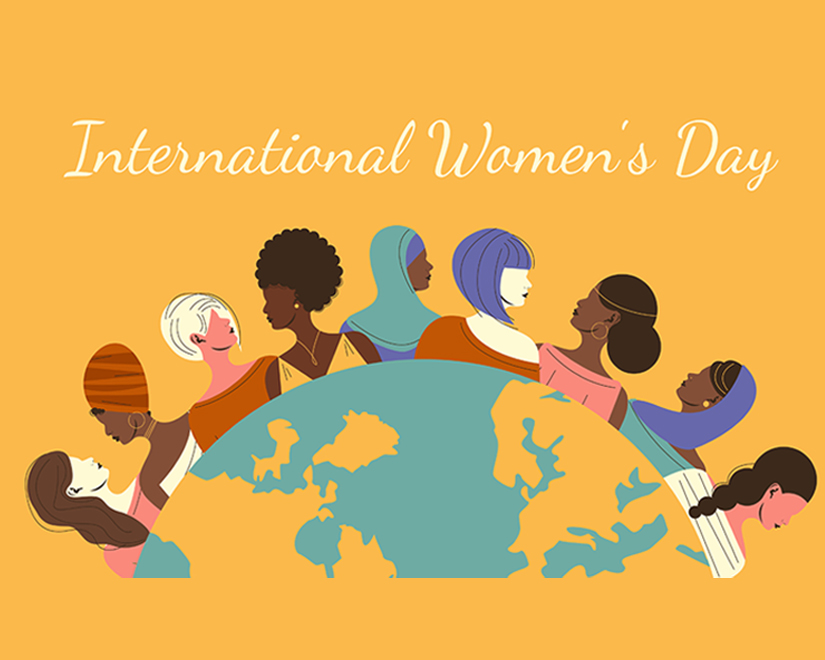International Women’s Day

International women's day
From one continent to another, women have deployed their talents as scientists and geologists over time. This year we have chosen to pay tribute to Iranian women and more particularly to Maryam Mirzakhan, a prestigious mathematician specialized in surfaces.
Until the 19th century, the place of women in the geosciences seemed rather erratic. Often recognized among lovers and collectors of rocks and minerals, such as the German Hildegarde de Bingen in the 12th century or Barbara Uthmann in the 16th century, they occupy a more academic position from the 19th century. Indeed, it was in England that women began to integrate scientific circles and in particular the Geological Society of London. In 1977 in San Francisco, women took a further step by creating a specific association to promote earth sciences for girls. Today the organization has 1,200 students and professionals from industry and research in some 20 US states, Middle East, Europe, Asia and South America.
Maryam Mirzakhani (1977-2017), an Iranian woman awarded the Fields Medal in 2014
Born in 1977 and deceased at the age of 40, Maryam Mirzakhani deserves special attention as her journey appears extraordinary. At the age of 17, the talented scientist won, alongside the Iranian team, the International Mathematics Olympiad. For the first time a woman was part of the national team. The following year, in 1995, she achieved a perfect score of 42 points out of 42 which earned her a gold medal in Toronto. Maryam Mirzakhani began her higher education at Sharif Faculty in Tehran. After graduating in 1999, she studied at Harvard and successfully defended her thesis. Maryam Mirzakhani is a lecturer at Princeton and a professor at Stanford. She specializes in topology and hyperbolic geometry. Her research focuses on Riemann surfaces.
In 2014 she was awarded the prestigious Fields Medal. She becomes the first woman, and so far the only one, to receive this prize awarded to mathematicians only every four years, unlike the annual Nobel Prize. Moreover, this remarkable decoration, created in 1936 by Canadian mathematician John Charles Fields, can only be awarded to people under 41 years of age.
Inge Lehmann (1888-1993), a Danish in the heart of earth
Born in 1888 in Copenhagen, Inge Lehmann followed an educational course that banished the differences between girls and boys, a remarkable fact for the time. She studied mathematics, chemistry, physics and astronomy and then conducted research with geodesist Niels Erik Nörlund to set up seismological observatories in Denmark and Greenland. Her work and her talent enabled her to obtain a doctorate in 1928, one aspect of which was in seismology. Soon Inge Lehmann became director of the department of seismology at the Royal Danish Institute of Geodesy. She oversees studies of the location of earthquake epicenters using data recorded by seismographs. From 1954 she became particularly interested in the Earth's mantle and collaborated with the American seismologist Beno Gutenberg.
Besides her own discoveries, in 1936 Inge Lehmann contributed to the creation of the Danish Geophysical Society, of which she became president in 1941 and 1944. She received the William Bowie Medal from the American Geophysical Union in 1971 for her contributions in the field of geophysics and another one from the Seismological Society of America in 1977. The American Geophysical Union created in her honor the Inge Lehmann Medal in 1995. Since 1997, this American award has been given to researchers who “make an exceptional contribution to the understanding of structure, the composition and dynamics of the earth's mantle and core".
Dorothy Hill (1907-1997), first female professor at an Australian university
Sudipta Sengupta (1946), an Indian geologist between the Himalayas and Antarctica
Born in Calcutta in 1946 Sudipta Sengupta has many facets. Geologist and mountaineer, she also wrote a world famous book, Antarctica, in which she relates stories about her scientific expeditions in the “White Continent”. As graduate of the University of Jadavpur in Calcutta, she teaches earth sciences there.
Maria Euridice Páramo Fonseca (1953): from geology to paleontology in Colombia.
Born in 1953 in Colombia, Maria Euridice Páramo Fonseca graduated from the University of Bogota in geology and paleontology. She has been leading research in the Department of Geoscience and has tremendously contributed to improve knowledge of Cretaceous reptiles for decades. Her foundation on the preservation and rescue of fossils allows us to better know and understand the evolution of the living world.
Maria Euridice Páramo Fonseca described the first dinosaur fossil ever discovered in Colombia !
Maureen E. Raymo (1959), specialist in the history and causes of global climate change
A graduate of Brown and Columbia Universities in the United States, Maureen E. Raymo is known for her work on the history and causes of global climate change. She is working on the link between global cooling and a decrease in atmospheric CO2 caused by the uplift of the Himalayas and the Tibetan plateau. Co-founder of the Columbia Climate School, Director of the Lamont-Doherty Earth Observatory, G. Unger Vetlesen Professor of Earth and Environmental Sciences, and Director of the G. Unger Vetlesen Institute of Environmental Sciences. Unger Vetlesen Professor of Earth and Environmental Sciences, and Director of the Lamont-Doherty Core Repository, she publishes seminal work on the stratigraphy and chronology of recent geologic times. Maureen E. Raymo proposes hypotheses to explain the patterns of ice sheet variability observed over the past several million years. She is deploying new ways to study past sea level change. Her numerical models provide a better understanding of past and future climate. They accurately analyze deep-sea sediment cores, records geochemical, paleontological and paleoclimatic changes. More recently, her research unit has focused on reconstructing sea level and ice volume during past warm climate intervals. Her goal is to predict sea level rise in the context of global warming.
Women geologists cross land borders and beyond!
Violaine Sautter, planetary geologist explores Mars to better understands Earth.

